The best AI art generators have taken the creative world by storm over the past year. Text-to-image generative AI allows users to create an image of, theoretically, anything they can imagine simply by describing it in a text prompt. But while most of the tools that have emerged work on the same principle, they're not created equal.
The various AI image generators out there have been trained on different data sets and provide differing results. Some can produce stunning realistic images while others produce blurry, nightmarish compositions. Sometimes the same tool will do both depending on what kind of image you're aiming to produce. So which is the best AI art generator for different purposes?
Some creatives have set out to find out, comparing the best AI art generators available by using the same prompts in each. And the results are fascinating. It almost seems like each AI art generator has its own personality and hangups – almost like a human artist. Each tool has its strengths and weaknesses, and sometimes even a recognisable look, and this is something that artists may be able to make use of (see our pick of the best AI art tutorials and our piece on how to use DALL-E 2 for some tips there).
DALL-E 2 vs Midjourney vs StableDiffusion mega thread: photography, illustration, painters, abstractthese image synths are like instruments - it's amazing we'll get so many of them, each with a unique "sound" 🤯rules: same prompt, 1:1 aspect ratio, no living artists pic.twitter.com/47syy7uPJJAugust 20, 2022
Berlin-based Fabian Stelzer, describes himself on Twitter as a 'prompt intern' working on three AI-based projects. To try to decide which is the best AI art generator for different purposes, he carried out an experiment comparing the output of text-to-image models Midjourney, DALL-E 2 and Stable Diffusion. He used the same prompts and the same 1:1 aspect ratio and comparted the results.
With prompts ranging from "low poly game asset, Cthulhu monster, 2000 video game, isometric view" to "1990s clip art of a laughing crazy fax machine, windows 3.1, MS-DOS, early computer clip art", the results that Stelzer shared in his Twitter thread allow us to compare how the tools handle different types of requests.
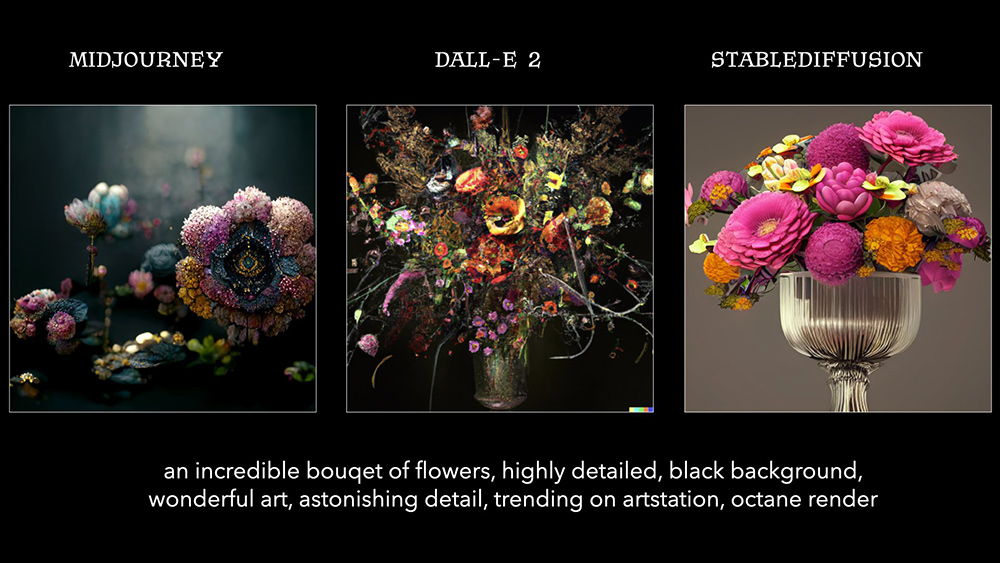
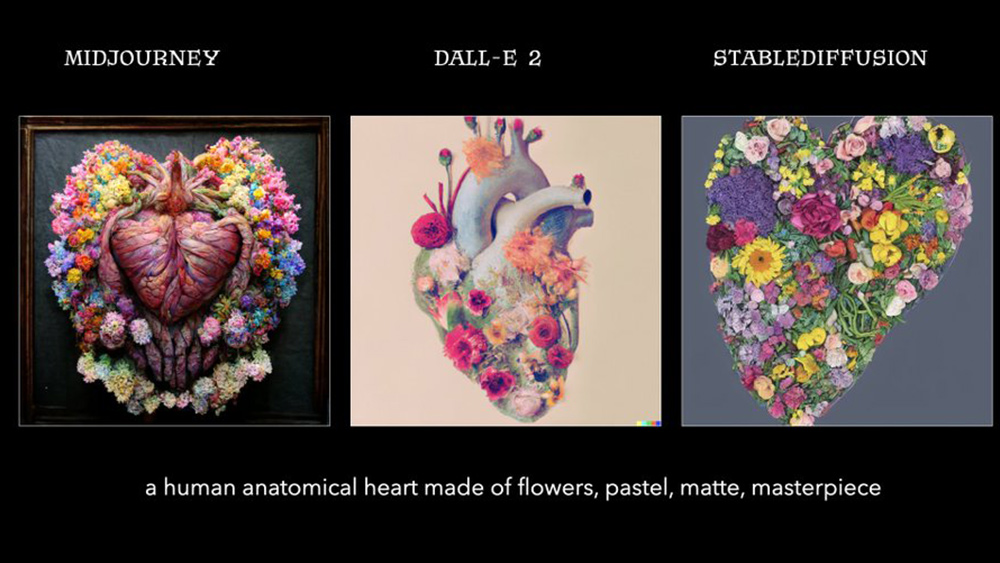
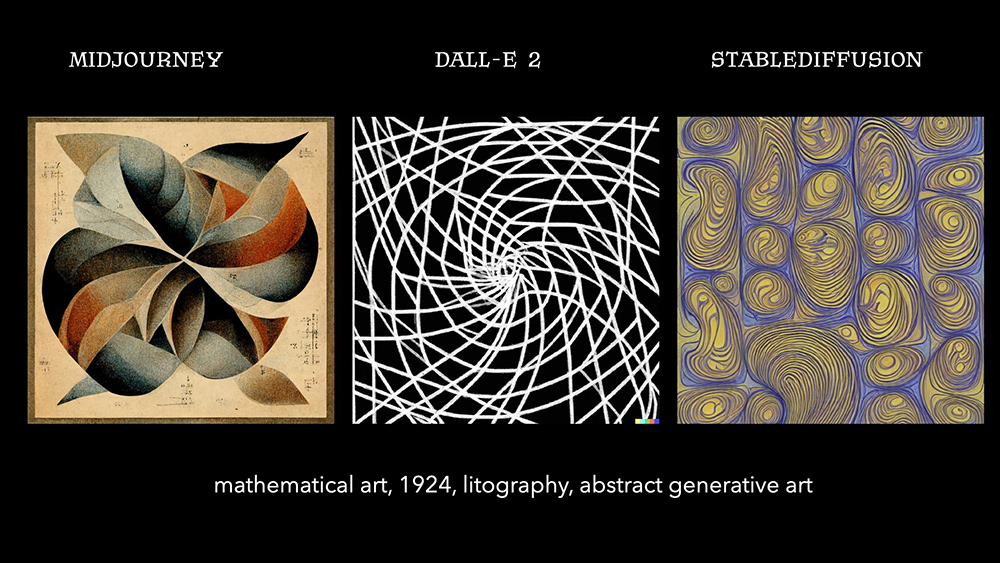
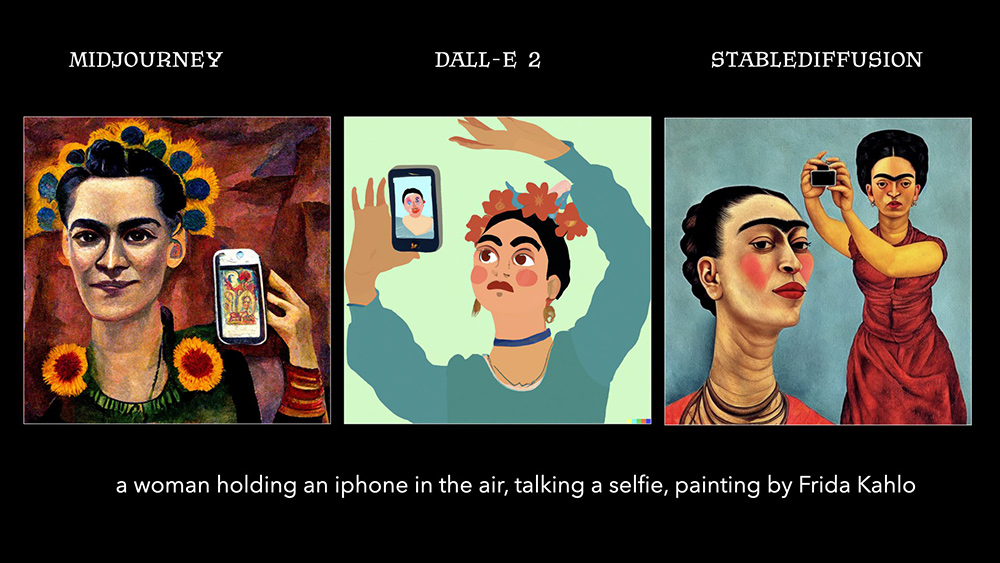
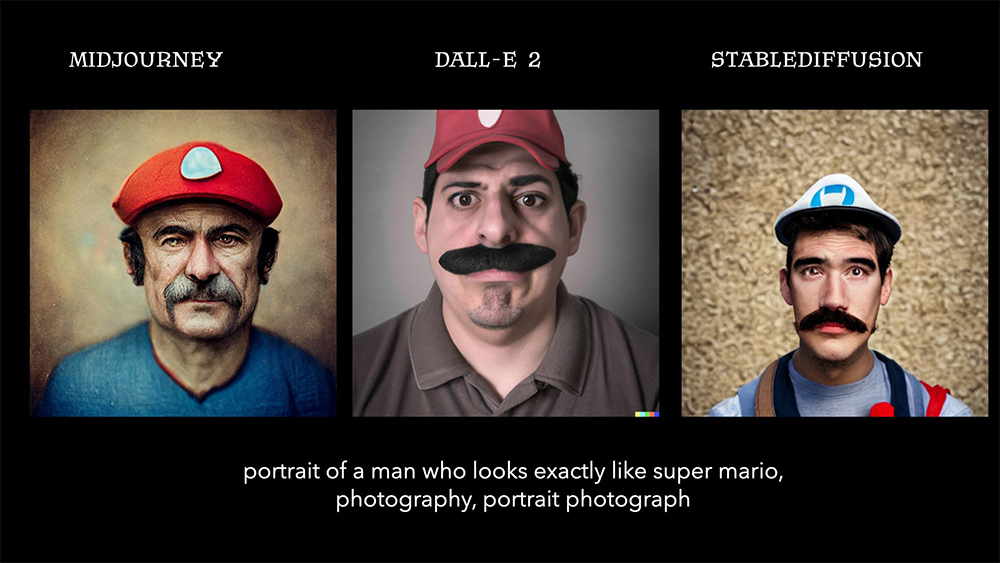
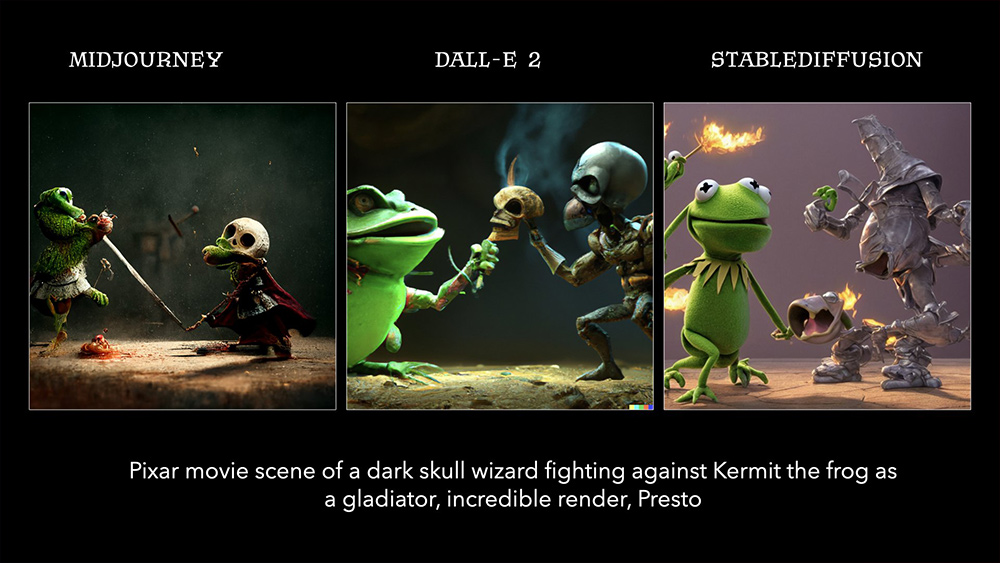
Midjourney's creations often feel very dark – almost apocalyptic. After all, this is the tool that was used to create the "last selfie on Earth" images that were going around recently (see our roundup of the weirdest AI art). We think this AI art generator definitely needs counselling, but it also seems to often produce the most natural results when it comes to artistic styles, particularly with textural details. Any artefacts appear natural, whereas in DALL-E 2 artefacts are often clearly digital-looking.
DALL-E 2 also has a tendency to throw in random invented words. It seems it's sometimes the best tool for creating photorealistic images and for handling facial expressions, but Stable Diffusion seems to produce the cleanest results – Stelzer notes that it can create incredible photos too but that you need to be careful not to "overload" the scene. It was also good at recreating the artistic styles of specific artists (a newer version of Stable Diffusion has made copying artists' style more difficult).
Get the Creative Bloq Newsletter
Daily design news, reviews, how-tos and more, as picked by the editors.
Stelzer says he sees these and other AI art generators much like musical instruments, each with its own range and timbre. Midjourney is like an analogue Moog – beautiful but with a limited range while DALL–E 2 has a huge range but a more obviously digital result "These image synths are like instruments - it's amazing. We'll get so many of them, each with a unique 'sound'," Stelzer says, adding: "You want to play'n'prompt DALL-E / Midjourney / StableDiffusion individually to their own strengths."
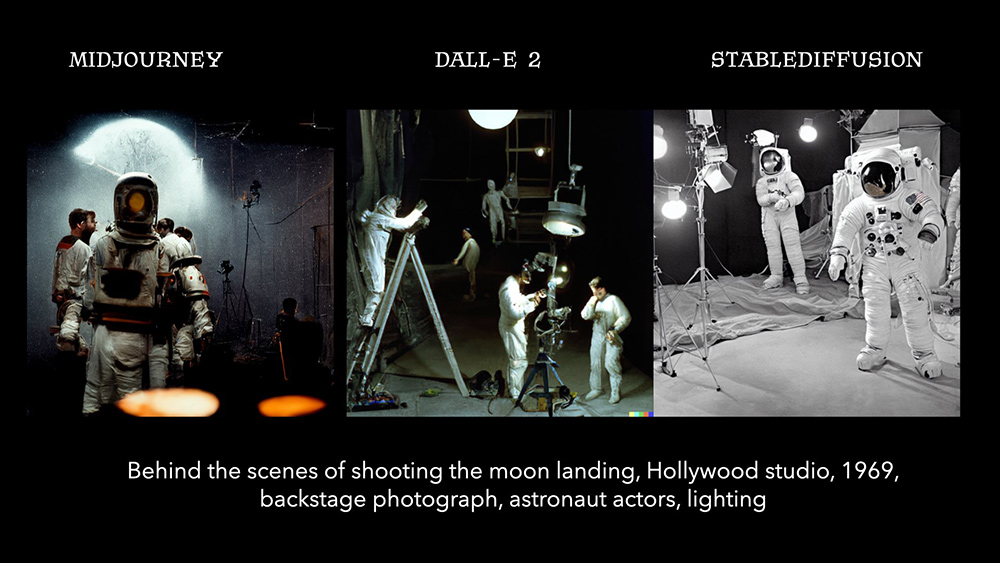
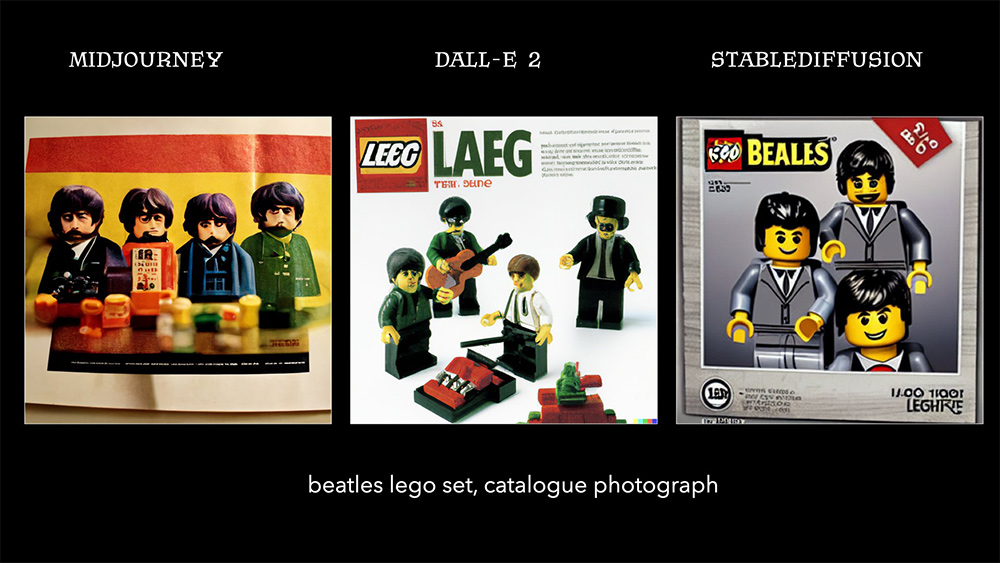
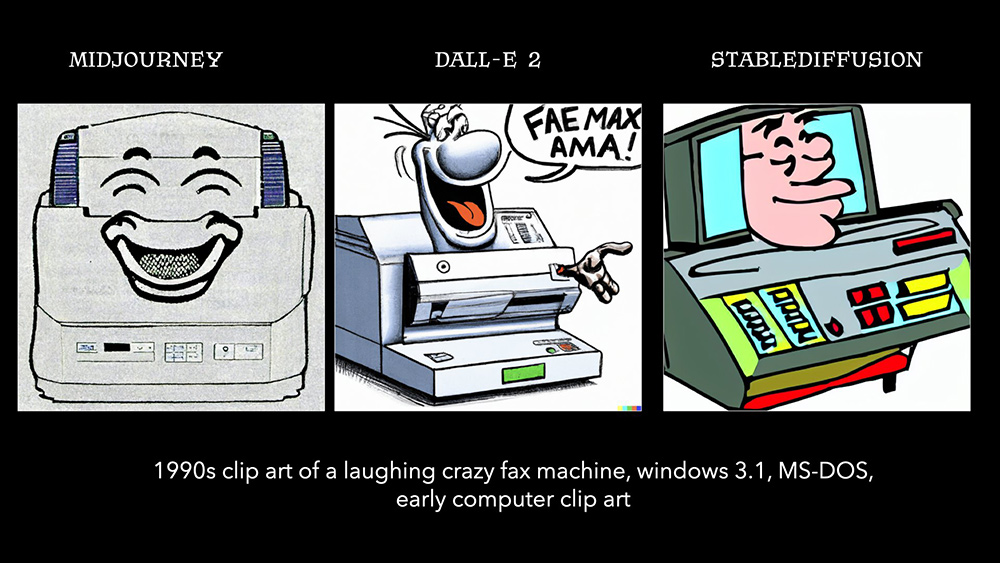
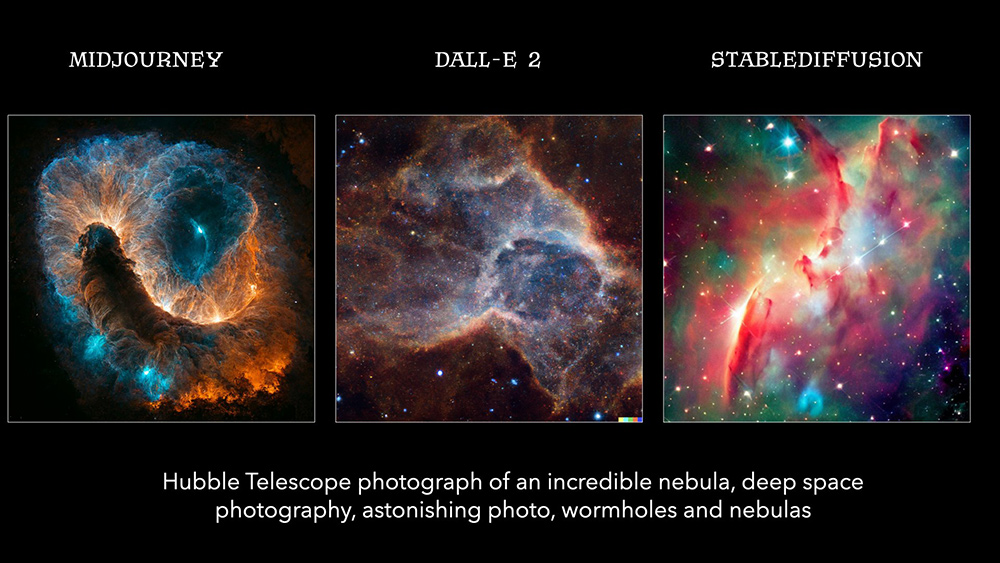
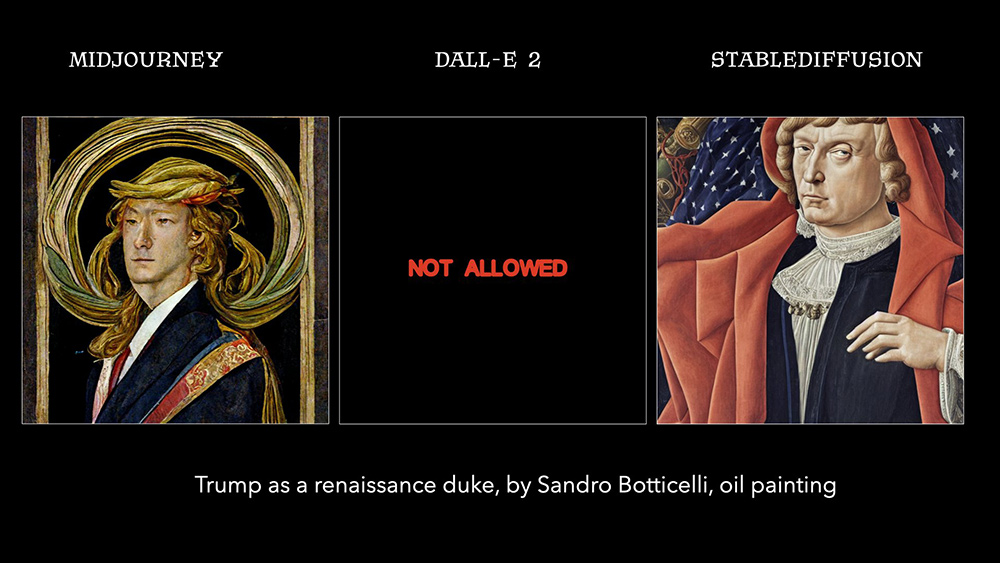
The three tools have other differences too, beyond the initial results of how they handle prompts. DALL-E 2 offers a powerful inpainting (and now outpainting) feature that allows you to edit parts of an image, while Midjourney has a big, active community of users for support and inspiration.
Stelzer believes that AI art generators will revolutionise creative work in ways we haven’t seen since the advent of photography – "what photography was to painting, image synths are to photographs," he says, and predicts that soon anyone will be able to create film-like content by typing it out. He's using AI to create community-narrated '70s sci-fi film SALT and the experimental Twitter game @battleprompts, in which players summon monsters through prompts – it's a fascinating glimpse at the creative possibilities that could emerge through AI-generated art and AI-generated video too.
How do free AI art generators compare?
Of course DALL-E 2, Midjourney and Stable Diffusion aren't the only AI art generators. There are many more, including some that are more less sophisticated but much easier to access – tools like Crayion (formerly known as DALL-E mini, although it has nothing to do with OpenAi's tool). So how do they compare? In the video below, we can see that DALL-E 2 gets by far the most realistic results, but Crayion also has its strengths.
In his comparison above, the YouTuber Philip Dyer (2kliksphilip) compares the prompted output of three popular AI image generators: Dall-E Mini (now Craiyon), Midjourney, and Dall-E 2. Dyer's looking for photorealism rather than artistic styles. He concludes that DALL-E 2 is the best for this, and Craiyon, well, isn't.
DALL-E 2 produces results that you might just think are real, Midjourney sits in the middle, producing more realistic results after some refining, while Craiyon isn't going to fool anyone that its outputs are real. However, there's more to it than that (Midjourney is the tool that was used to create the controversial AI artwork that won an art competition in Colorado.
Dyer also notes that each tool requires some learning to get the best from it, and they may require different approaches to the phrasing of prompts to generate the best AI images they can produce. He found that by playing with different prompts he was able to get images from Crayion that, while not realistic, were very creative and more diverse than those produced in the other tools, suggesting that it could be an interesting springboard for ideas.
We can certainly see a lot of uses for DALL-E 2 for professionals – you could use the images to paint over or in a new form of photobashing workflow, but we're not writing off tools like Crayion and Artbreeder-collages. For one, they're (at least for now) free and accessible for anyone, but secondly, realism isn't necessarily what everyone's looking for in AI art generation. Weird, surreal abstract images could be just the thing we sometimes need for creative inspiration.
Read more:

Thank you for reading 5 articles this month* Join now for unlimited access
Enjoy your first month for just £1 / $1 / €1
*Read 5 free articles per month without a subscription

Join now for unlimited access
Try first month for just £1 / $1 / €1

Joe is a regular freelance journalist and editor at Creative Bloq. He writes news, features and buying guides and keeps track of the best equipment and software for creatives, from video editing programs to monitors and accessories. A veteran news writer and photographer, he now works as a project manager at the London and Buenos Aires-based design, production and branding agency Hermana Creatives. There he manages a team of designers, photographers and video editors who specialise in producing visual content and design assets for the hospitality sector. He also dances Argentine tango.
